The Charge Forward: Quincy Lee, Co-Founder & CEO of Electric Era, on the Future of EV Fast Charging
Quincy Lee, Co-Founder and CEO of Electric Era, started his professional career as a mechanical engineer at SpaceX. Applying the skills he learned for spacecraft to the climate challenge here on Earth, Quincy is on a mission to make electric vehicle fast charging ubiquitous and affordable. At Electric Era, Quincy and his team have built a modular electric vehicle battery and smart charging system that enables the easy implementation of charging stations at gas stations and convenience stores.
We had the chance to talk with Quincy about what he learned from his time at SpaceX, the process of creating and deploying Electric Era’s PowerNode product, and the future of AI and EV fast charging.
For more on Blackhorn’s investment in Electric Era, see our investment announcement here. For information on open roles at Electric Era, visit their job board here.
Tell us a little about yourself. What life experiences brought you here today?
I spent seven years working at SpaceX as a mechanical engineer and was professionally trained in building commercial technology products. At SpaceX, I worked predominantly on the Starlink satellite constellation and ultimately owned the team that built out the full gateway ground station antenna program. We built a bunch of antennas all over the world that communicate with Starlink satellites and provide connectivity from terrestrial internet up to the Starlink satellite internet.
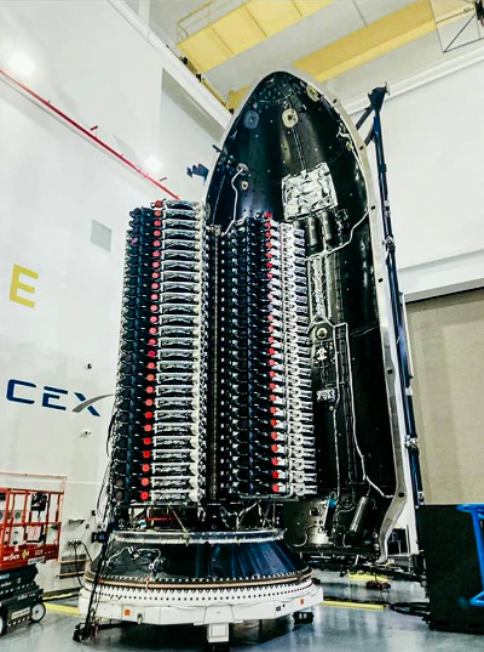
Source: SpaceX
My original perspective towards business was that of a typical engineer, where one thinks about technology and not necessarily commercial use cases – I definitely grew into thinking about product and the customer value proposition over time. The Starlink experience provided me with a great framework to think about entities solving the climate problem, which is extremely useful when trying to contemplate decarbonizing the global economy.
In 2018, I started to become passionate about decarbonization during, ironically, a rocket launch. I was watching the rocket launch through a rear-facing camera and saw the globe getting smaller and smaller in the distance. I remember thinking about how I was spending all of my time and talent sending things away from Earth when there were so many challenges and opportunities on this planet.
So, I started thinking about ways that I could contribute to the climate tech effort and, ultimately, identified the urgent need to fix electric vehicle (EV) fast charging, which at the time was the main impediment to new EV adoption, which is still one of the major impediments to adoption, primarily because drivers don’t feel comfortable purchasing a vehicle they can’t charge.
All of those factors contributed to us building Electric Era and launching the PowerNode product, which is a battery-backed and software-optimized EV fast charging station that we can build effectively anywhere on the grid. Using first principles, physics, and design, we have engineered a product that solves the fundamental issues and challenges of EV fast charging: grid access, reliability, and cost.
What were some of the largest lessons learned from your time at SpaceX?
SpaceX provided a lot of lessons. Thinking about things from a first principles perspective and understanding basic technology, engineering, and science behind the energy economy is an absolute necessity to do decarbonization. It’s something I developed throughout my time at SpaceX. If you want to create viable climate solutions, you have to understand at a very deep level first principles and then design solutions using those first principles.
First principles thinking – I know it’s a kitschy statement – means understanding at a very deep level what makes up the universe around us. Once you have this basic mental model, you can use it to creatively design systems, machinery, and business models that will produce substantial change. Every day, we apply first principles thinking across all of our teams. Whether it’s sales, product, software, or implementation, we employ that deep perspective in all of our work to make the most rapid and efficient progress possible. We use it to build products that have substantial advantages over all other approaches in the market.
The second lesson learned is more cultural in nature. Spending time in such an intense environment teaches you how to be an effective operator of teams. We have amalgamated our SpaceX experience into 11 principles that guide hiring at Electric Era. We maintain an incredibly high bar for people joining our company and screen heavily based on how hiring will impact culture, prioritizing qualities such as motivation, accountability, and pedagogical nature. All of these characteristics materialize every day in the journey to build ubiquitous, affordable, and reliable EV fast charging. So, we have made a concentrated effort to hire individuals who meet all those criteria – in our opinion, you need the full complement to make a startup gel together.
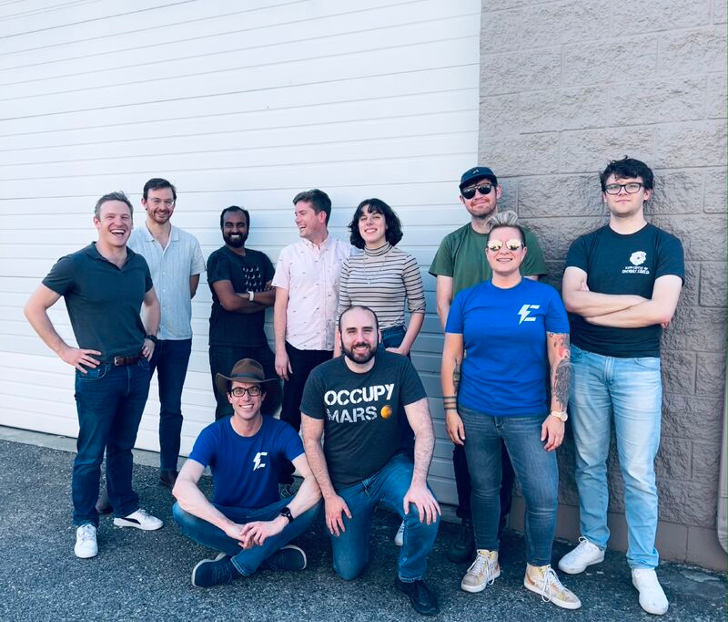
In addition to those cultural attributes, we of course hire smart people that have high intellectual fluidity and a high deal of competency in their jobs. As a result, I believe we have put together by far the best team in climate. We’ve been able to do a lot with a little and are moving at an incredibly fast pace. I think it all comes down to a detailed focus on what actually makes the best people and the best team, and hiring accordingly.
What problem are you trying to solve at Electric Era? Why now and why you?
Over the next century humanity must reorganize the entire global energy supply chain. That means everything from generation to transmission to distribution to consumption of all energy types across all energy use cases. That is obviously an extremely difficult task.
Narrowing in, transportation decarbonization requires a huge amount of work. We have to onboard large amounts of renewable energy sources that are sustainability sourced. We have to onboard huge amounts of energy buffering technologies – long duration and short duration energy storage technologies – that can absorb the variability of those renewable resources. Then, we have to get them to the right locations, 99% of which are in metropolitan areas of demand. We have to engineer and build transmission-level grid systems distribute power all the way down to where energy is used locally.
That last level – the distribution grid level – is where Electric Era is focused. At the distribution grid level, we have a problem with EV fast charging: the mismatch between the power that an EV fast charging station uses and the power that a distribution grid can provide. Why does that matter? It matters because it’s extremely expensive and time intensive to rebuild distribution grid infrastructure. It’s time we don’t have. It’s money we don’t have. It’s work that, in many cases, simply cannot be done. We need a better way to make sure that the grid can distribute power at desirable retail locations in a reliable and affordable manner to EVs that are trying to fast charge.
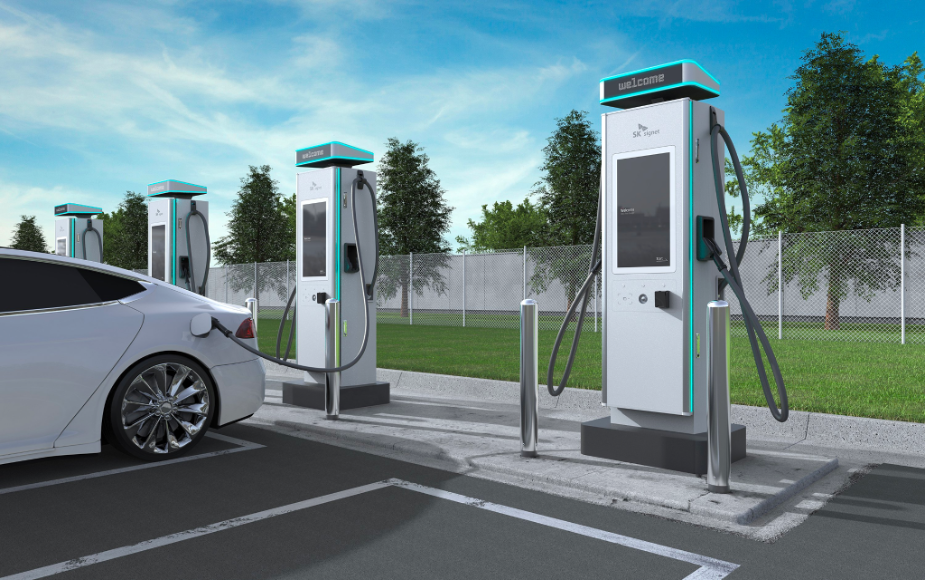
Solving that fundamental mismatch is what we set out to accomplish at Electric Era. And we solved it with PowerNode, which is our battery packs and software-optimized EV fast charging station that drastically levels out the load required from the distribution grid to fast charge EVs in a premium, rapid manner coupled with a high number of sessions per day, every day. How do we do that? We accomplish it with a couple of key components. First, we have chargers at our fast charging stations. Second, we have a battery buffer, which is sized properly for high-power applications and for multiple cycles per day. The final ingredient is our real-time, autonomous software system and our proprietary algorithms that allow us to have a generalized power controller that can source power above the local grid limit from the grid and the on-site battery storage system to electric vehicles. All of those components come together to provide above-the-grid capable charging systems and premium fast charging to drivers, up to 150 times per day.
We have proven the technology and now are scaling it across 19 high-value retail locations across the United States, such as gas stations and convenience stores, where drivers want to be while they fill up. We have had great success selling the product and now are in the growth and implementation phase of the business.
You were recently granted a patent for above-the-grid limit charging – why is this important?
Above-the-grid limit capable charging systems matter because you need to be able to serve power to vehicles that exceed the local grid limits on the distribution grid. If you don’t accomplish that, then you have to build a whole new grid connection or buy an extremely large battery in order to provide an EV fast charging station, neither of which makes sense economically.
If you can pull above-the-grid limit technology together, you can install EV fast charging stations anywhere on the grid for less cost and less time. With increasingly inexpensive and implementable charging stations, you can rapidly deploy EV fast charging stations and the necessary infrastructure the nation needs to rapidly convert to an electric form of transportation.
We have the sole authority from the USPTO to use our approach and its technology stack to facilitate charging in this manner, an approach which, from our perspective and market analysis, will increasingly be a common way to provide fast charging.
Electric Era is currently scaling PowerNode across the United States. What have you learned throughout the process, from forming your GTM strategy to implementing the product?
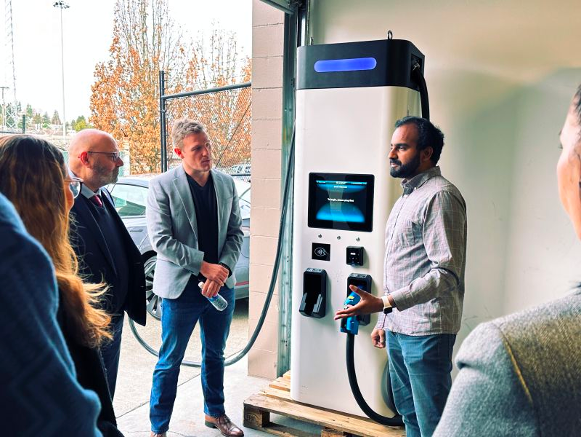
I knew when founding Electric Era that engineering and technology development was going to be the easy part. The largest learning in retrospect has been around sales and commercialization – turning technology into a product that customers both want to purchase and find valuable.
The first step was packaging the technical solution into a full product that was highly attractive to our end-user, and finding a customer segment that had an existential need for a solution. Once we had a handle on the commercial product, the end user, and the end market, it was a matter of scaling up a sales organization. Later, when we had the right people and a better understanding of the market, it was a fast process; however, it was challenging and time-intensive to begin. The big lesson with sales is that you have to sell value and have a high degree of operational efficiency. You have to be consistently selling, prospecting, and communicating with customers.
At this point in the journey, sales is starting to click. A large portion of my focus is ensuring our implementation team can rapidly build charging stations and we have an effective process for deployment. Today we have eight customers across nine states with 19 deployments at various stages of implementation, and are rapidly adding more customers to the queue.
What do you view as the largest technological differentiator for Electric Era’s PowerNode?
We use an off-the-shelf battery chemistry that can both service high-power current flows and service them repeatedly. We have battery supply partners who are leaders in long cycle-life since this is a very cycle-heavy application – that’s not necessarily proprietary and we don’t build our own chemistry or even our own battery packs.
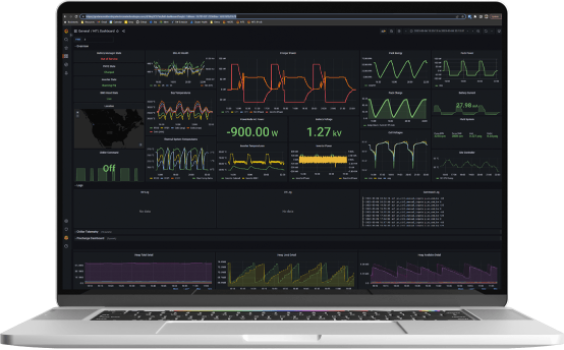
Instead of building proprietary battery packs, which are very capital-intensive and under leveraged in terms of the technical outcome and value creation for the customer, we focus on building leverage from our software stack. We have spent significant time building our proprietary PowerNode OS software system, which comes with a suite of functionality including the power controller algorithms that enable above-the-grid charging, full network capabilities, charging station management software, and retail-focused products that generate additional revenue, as well as some exciting new products that have not been announced yet. We built a fully extensible operating system from the ground up and in-house to support the retail-associated EV fast charging use case with PowerNode.
We’ve seen Ford, GM, and Rivian coalesce around Tesla’s charging standard. What does that mean for Electric Era?
People should think about the Tesla charger as a new hardware substrate for the industry. The functional change is that there is a different connector at the end of the charger. That’s it. It’s similar to how Apple changes its charger plugs from time to time. From our perspective, little has changed. In fact, we’ve been pushing our EV charging manufacturer towards the Tesla hardware for nearly a year. In our mind, that’s the right charger to use.
Tesla recently opened up a charging network, which is more interesting to us. However, we also see that in a positive light because our primary customer base is the only charging location that is suitable to compete with Tesla across the broader requirements of a compelling EV refill experience (ie. convenient locations that are safe and well-lit, have excellent amenities, and have in-store product opportunities that can be sold to lower the price of EV fast charging).
We’re very bullish about retail adjacent fast charging for those reasons. In the aggregate, we are road mapping to provide better EV fast charging and refill experience than Tesla can in the long run. We definitely respect what Tesla is doing, but we ultimately believe that Electric Era can and will surpass the quality of a Tesla Supercharger Station.
You were a competitive all-American swimmer in college. What lessons did you take from your time in the pool to the co-founder role at Electric Era?
Sports teach a few really valuable lessons. First, they show that you can mold your reality to your liking – that is something everyone in the world should know, but very few do. People have agency over their existence. I think a lot of people follow the path that life presents to them, as opposed to structuring their days to create opportunities that offer them access to what they want. As an athlete, you are put in situations where you have to employ an agency-driven mindset to accomplish your goals. So, one of the biggest things I got out of swimming was the idea that I can structure my life to my liking.
Second, swimming taught me how to work hard. You are not going to change the world, solve the climate crisis, or be a successful founder unless you work your tail off. Sometimes, people forget how much hard work goes into success. I am very grateful that I developed a strong work ethic from swimming at a young age.
The last thing sports taught me is accountability. You are accountable for your own success and, similarly, you are accountable for your own failures. When things don’t go right, you have to point your failures back toward yourself and reflect on why things didn’t go to plan. The same is true when founding a business or being a successful member of a team. It is ultimately up to you to achieve your goals. Being accountable to yourself, to your teammates, to your investors – that is how you get the best out of everyone.
For more on electric era’s journey in Quincy’s own words, click here